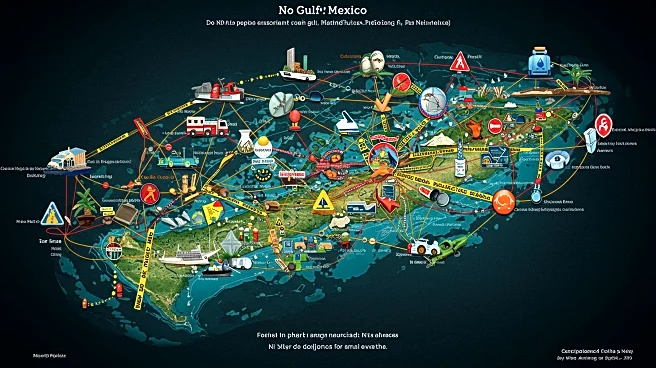What is the story about?
What's Happening?
A comprehensive network analysis has been conducted to examine the food-energy-water (FEW) nexus in the Gulf of Mexico region. The study highlights historical and ongoing tensions driven by agricultural practices, energy demands, and water management. Key players include farmers, the fertilizer industry, and government entities. The analysis identifies regional hotspots and the impact of delocalized decisions on local resilience. Issues such as water scarcity, nutrient pollution, and the effects of fracking are central to the tensions observed.
Why It's Important?
Understanding the FEW nexus is crucial for addressing environmental and economic challenges in the Gulf of Mexico region. The study provides insights into how interconnected sectors contribute to regional tensions, affecting water quality, agricultural productivity, and energy resources. Stakeholders, including policymakers and industry leaders, can use this information to develop integrated strategies that enhance resilience and sustainability. The findings underscore the need for both top-down and bottom-up approaches to manage resources effectively.
What's Next?
The study suggests that improving land management and water use policies could enhance regional resilience. Local stakeholders are encouraged to unite in a bottom-up approach to address these challenges. Future research and policy development will likely focus on mitigating the identified tensions and exploring sustainable solutions. Collaboration between government agencies, industries, and communities will be essential in implementing effective strategies.
Beyond the Headlines
The analysis reveals deeper implications, such as the role of biosolids in nutrient pollution and the impact of 'forever chemicals' on health and the environment. These findings highlight ethical and health concerns that require attention from regulatory bodies and public health organizations. Long-term shifts in resource management and environmental policy may be triggered by these insights.
AI Generated Content
Do you find this article useful?















